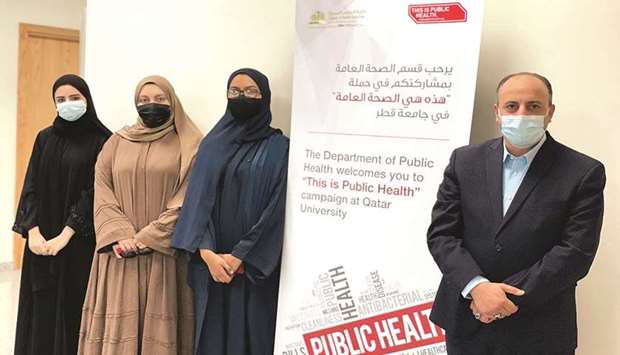Seven students from the Department of Public Health at the College of Health Sciences in Qatar University (QU) have had their research project accepted for publication in 'Medicine Journal' during the month of September.
The project, titled 'The relationship between smartphone use and dry eye disease: A systematic review with a narrative synthesis', was supervised by Dr Mujahed Shraim, assistant professor at the Public Health Department.
The students who contributed to this research work are Khaloud al-Marri, Maha al-Qashoti, Hissa al-Zoqari, Usra Elshaikh, Alya Naqadan, Raghad Saeed and Jameela Faraj.
A systematic search of Medline, Embase, Cinahl and PsychInfo bibliographic databases from their inception to January 15 this year was conducted to systematically review and synthesise evidence on the relationship between smartphone use and dry eye disease, QU said in a statement.
Moreover, study screening, full-text assessment, study selection and exclusion, data extraction, and quality assessment were performed independently by at least two review authors. Four studies were included in the review (three cross-sectional studies and one non-randomised clinical trial).
A narrative synthesis of findings was used due to heterogeneity among study designs and measures of association summarising the relationship between smartphone use and dry eye disease. All the included studies were conducted in South Korea and involved schoolchildren, college students or young adults.
Three out of the four included studies showed an association between smartphone use and dry eye disease. The research group concluded that there is some evidence that smartphone use is associated with dry eye disease.
However, this evidence is limited by a small number of studies of satisfactory methodological quality. They also concluded that there is a great need for high-quality studies to further investigate the relationship between smartphone use and dry eye disease and identify mechanisms underlying this potential relationship.
This information is important for raising public awareness about the negative effect of smartphone use on eye health and the development of clinical guidelines for this potentially emerging smartphone use-driven eye condition, the statement adds.
The students who contributed to this research work are Khaloud al-Marri, Maha al-Qashoti, Hissa al-Zoqari, Usra Elshaikh, Alya Naqadan, Raghad Saeed and Jameela Faraj.
A systematic search of Medline, Embase, Cinahl and PsychInfo bibliographic databases from their inception to January 15 this year was conducted to systematically review and synthesise evidence on the relationship between smartphone use and dry eye disease, QU said in a statement.
Moreover, study screening, full-text assessment, study selection and exclusion, data extraction, and quality assessment were performed independently by at least two review authors. Four studies were included in the review (three cross-sectional studies and one non-randomised clinical trial).
A narrative synthesis of findings was used due to heterogeneity among study designs and measures of association summarising the relationship between smartphone use and dry eye disease. All the included studies were conducted in South Korea and involved schoolchildren, college students or young adults.
Three out of the four included studies showed an association between smartphone use and dry eye disease. The research group concluded that there is some evidence that smartphone use is associated with dry eye disease.
However, this evidence is limited by a small number of studies of satisfactory methodological quality. They also concluded that there is a great need for high-quality studies to further investigate the relationship between smartphone use and dry eye disease and identify mechanisms underlying this potential relationship.
This information is important for raising public awareness about the negative effect of smartphone use on eye health and the development of clinical guidelines for this potentially emerging smartphone use-driven eye condition, the statement adds.



